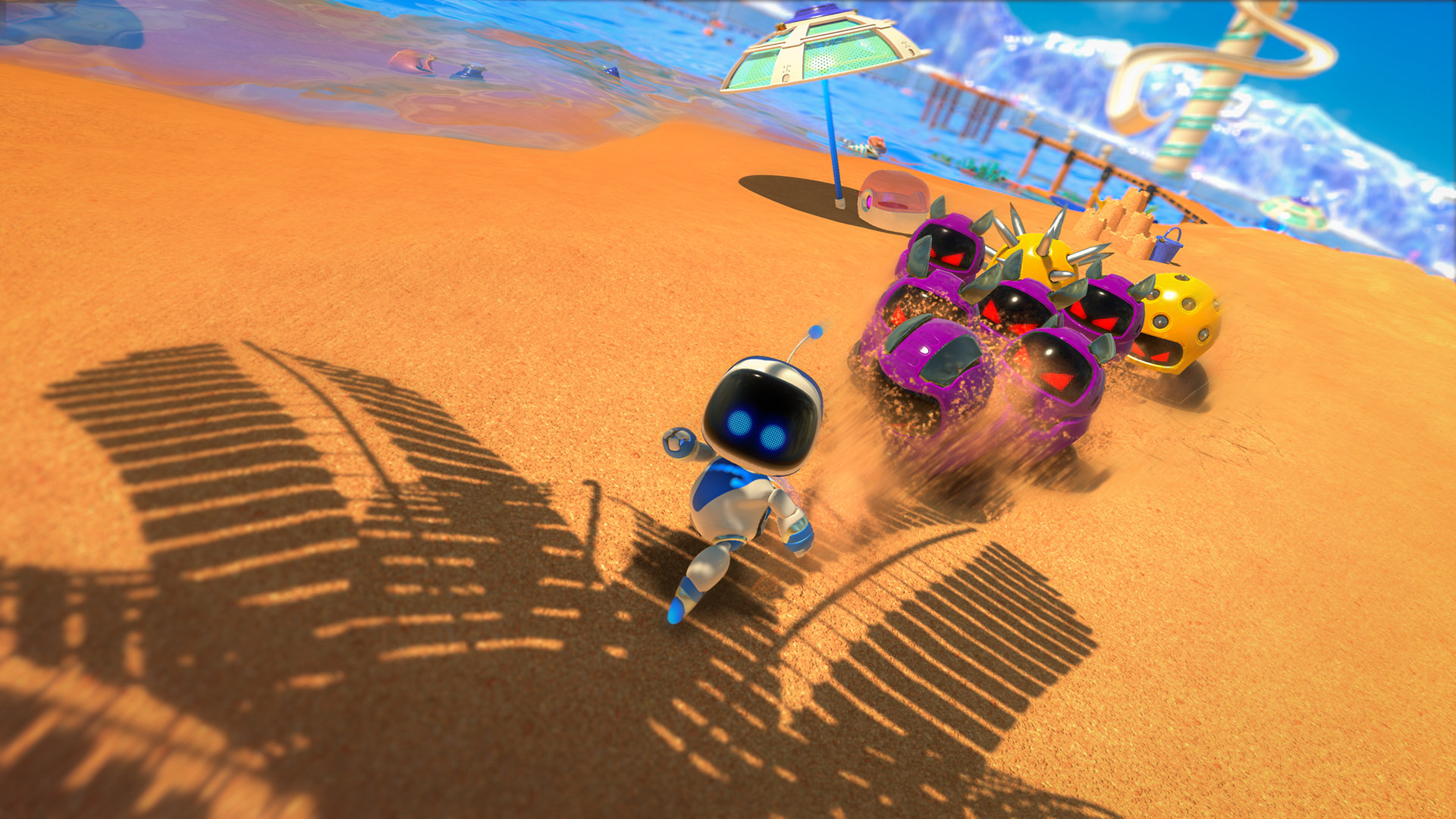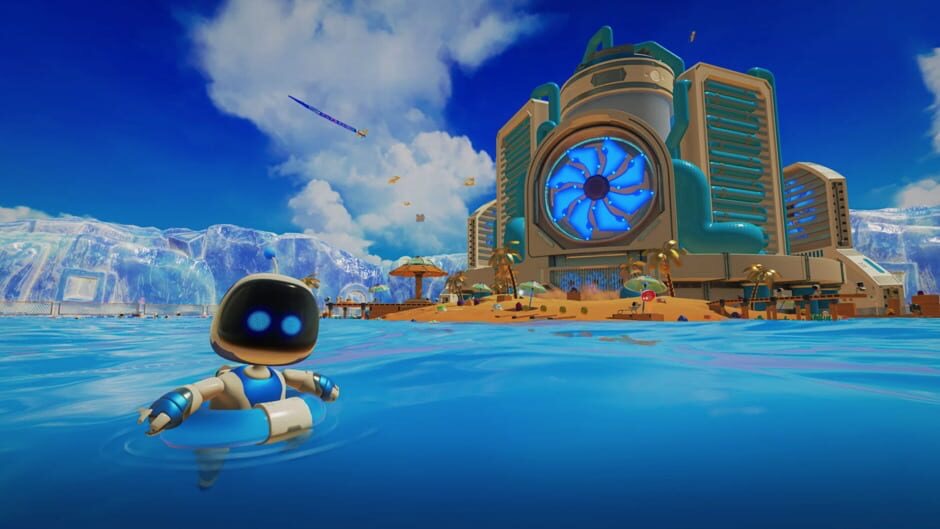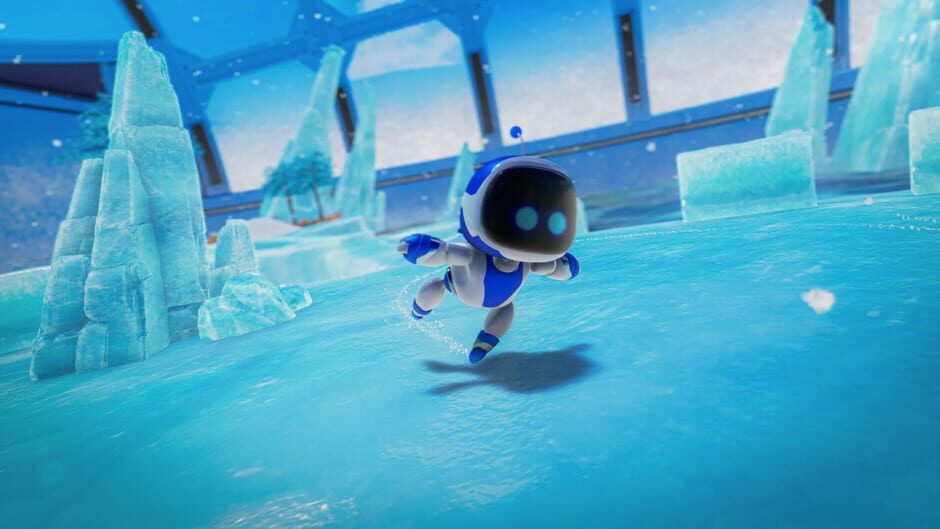Astro’s Playroom — Domo Arigato, Lil’ Roboto
Astro’s Playroom is a love letter written for anyone who has ever held a Playstation controller in their hands and felt the magic of play during the last 16 years.
It may not seem like much at first, but Astro’s Playroom is meant to be a demo that showcases the best of what the Playstation 5 has to offer. With a wide array of technical tricks and gorgeous graphics, it delivers on that in spades but also manages to do one thing very very well: deliver a history lesson of all that made Sony’s Playstation great over all the years.
When you fire up Astro’s Playroom for the first time, you’re given a quick once-over of how the controls work and what to expect from the new Dualsense controller. This tutorial not only starts to deliver on the promise that Sony made with the Playstation 5’s new controller’s abilities but it also then continues to provide them a literal platform to ease you into the new era of haptics and adaptive triggers once you’re unleashed into the playroom itself.
Back when the Nintendo Wii was released in 2006, the technology of motion controls was relatively new. The notion that actual movements translated into gameplay was a wild and raging success and Sony even managed to gain some of the slice of that accomplishment with their release of the Sixaxis Dualshock controller, also released in 2006. Motion controls seemed to appeal generally to the masses of casual players and found great success alongside family-friendly games, which brought a new generation of gamers into the fold. Love them or hate them, motion controls had a huge impact on the industry and went on to contribute largely to the Wii’s runaway success.
 The technology in this new controller feels a lot like that new frontier that the Wii showed the world. Used properly, the Wii remote was wonderfully inspiring and a natural feeling extension beyond a typical controller. Similarly, every second of Astro’s Playroom delivers that ‘best of’ showcase, providing over-the-top scenarios where the triggers and vibrations can deliver a synchronized experience with the main character, Astro, which brings you directly into his world of robotized construction and joyful interactions with the denizens that run rampant.
The technology in this new controller feels a lot like that new frontier that the Wii showed the world. Used properly, the Wii remote was wonderfully inspiring and a natural feeling extension beyond a typical controller. Similarly, every second of Astro’s Playroom delivers that ‘best of’ showcase, providing over-the-top scenarios where the triggers and vibrations can deliver a synchronized experience with the main character, Astro, which brings you directly into his world of robotized construction and joyful interactions with the denizens that run rampant.
Astro’s Playroom takes place inside of a Playstation 5 console. The GPU, SSD, CPU cooling system and RAM all have their own levels, ranging from a lovely sunny beach to outer space. It’s absurd when you think about it, but the team at ASOBI did a great job at turning these simple ideas into fully fleshed-out levels that showcase the strengths of things like instant loading from the SSD and an absolutely bonkers amount of objects rendered on the screen at once with some of the most impressive texture details I’ve ever seen.
 Why the controller is so essential to the experience here is because you feel every footstep through the haptic vibrations in the controller. When you change to a different surface texture or element such as snow, it feels appropriately nuanced to match the characteristics. Every punch, interaction, everything is felt as if you were literally holding the tiny robot in your hands and feeling everything he does through that connection. Another surprise is the first time you feel the magic of the adaptive triggers.
Why the controller is so essential to the experience here is because you feel every footstep through the haptic vibrations in the controller. When you change to a different surface texture or element such as snow, it feels appropriately nuanced to match the characteristics. Every punch, interaction, everything is felt as if you were literally holding the tiny robot in your hands and feeling everything he does through that connection. Another surprise is the first time you feel the magic of the adaptive triggers.
Whether you are depressing a spring in a floppy robotic suit that bounds around a spa-like environment filled with pools and beach balls or pulling back the string on a bow, you can actually feel the tension from these actions. The pulling of the triggers can be incredibly hard or more dynamically defined, depending on the task, thanks to the clever motor system incorporated here. It may not be the most game-changing thing, but combine it with the immersive vibrations from the control, and a lot of these tasks seem like an extension beyond the screen.
 The core game here is platforming perfection, delivered by the life-saving beams that Astro fires downward when you hit the jump button a second time. This double-jump is very reminiscent of other platforming characters that have a ‘flutter jump’ of sorts, and this controlled hover, combined with the shadow of Astro cast upon the platform you are trying to land on, makes defining that jump even easier. Astro can also punch enemies and other interactable objects in the environment, or he can do a spin attack if the button is held down, which will send him in a tizzy, allowing activation of switches that require rotation. Each of the interactions in the environment feels fun, fresh, and an extension of the joy you feel through its playfulness.
The core game here is platforming perfection, delivered by the life-saving beams that Astro fires downward when you hit the jump button a second time. This double-jump is very reminiscent of other platforming characters that have a ‘flutter jump’ of sorts, and this controlled hover, combined with the shadow of Astro cast upon the platform you are trying to land on, makes defining that jump even easier. Astro can also punch enemies and other interactable objects in the environment, or he can do a spin attack if the button is held down, which will send him in a tizzy, allowing activation of switches that require rotation. Each of the interactions in the environment feels fun, fresh, and an extension of the joy you feel through its playfulness.
Astro’s robotic environment is filled to the brim with other robots, who seem to be enjoying the adventure just as much as he is. Dancing, swimming, and just generally being mischievous is their way of expressing themselves, but there are some that go beyond showing their appreciation for Sony’s games. These cameos or easter eggs are literally everywhere, at seemingly every turn, you’ll see robots dressing up as characters from your favorite games and franchises. It’s a touching nod to the art that made the Playstation what it is today and it’s great fun to find your favorite game being paid tribute, even if it is by some crazy robots.
 If you have a keen eye and can spot their hidden pathways, there are plenty of additional things to find in the levels, like puzzle pieces that fill out a mural on the wall of a lab inside the main hub and more importantly, artefacts. Artefacts are the ultimate throwback, as each one is a piece of Playstation history — a 3D, rotatable model that you can zoom in to and take in the high-definition details. All the controllers and systems are here, and they gather in the Lab, just ready for you to play around with. Certain systems have trays that will pop out or displays that show off title screens for Astro-themed takes on well-known games such as Uncharted and Tearaway. It’s a whole experience by itself and it’s accentuated by a purposeful longing to collect them all.
If you have a keen eye and can spot their hidden pathways, there are plenty of additional things to find in the levels, like puzzle pieces that fill out a mural on the wall of a lab inside the main hub and more importantly, artefacts. Artefacts are the ultimate throwback, as each one is a piece of Playstation history — a 3D, rotatable model that you can zoom in to and take in the high-definition details. All the controllers and systems are here, and they gather in the Lab, just ready for you to play around with. Certain systems have trays that will pop out or displays that show off title screens for Astro-themed takes on well-known games such as Uncharted and Tearaway. It’s a whole experience by itself and it’s accentuated by a purposeful longing to collect them all.
At the back of the Playstation ‘Labo’, is an arcade gacha game. For 100 coins per play, you can randomly be given a puzzle piece, a robot-adorned diorama, or, if you manage to get a gold capsule, one of the artefacts. It uses your hard-earned coinage from gameplay to extend your rewards into tangible ones that you can play with, and it is one of the best in-game reward systems I’ve seen, continuing the trend from the VR-only title, Astrobot: Rescue Mission, which also had a similar machine. These small touches go the extra mile at reinforcing play and make the gameplay shared between progress and collection even better.
 Astro’s Playroom takes some simple concepts and sends them beyond their purpose, making the feel of the game just as important as playing it. Every bit of the playroom incorporates fun interactions that extend the joyfulness of picking up the controller and becoming one with Astro. While the entire adventure can be finished in a few hours, collectors can seek out each of the historic trinkets hidden throughout for some additional time sink, and also can compete globally for their fastest runs in a time trial hub.
Astro’s Playroom takes some simple concepts and sends them beyond their purpose, making the feel of the game just as important as playing it. Every bit of the playroom incorporates fun interactions that extend the joyfulness of picking up the controller and becoming one with Astro. While the entire adventure can be finished in a few hours, collectors can seek out each of the historic trinkets hidden throughout for some additional time sink, and also can compete globally for their fastest runs in a time trial hub.
While the initial intent for Astro’s adventure here was a means to show off their technology, it transcends that purpose into an experience that will keep you smiling throughout, beaming bright a lasting testament of appreciation for the love spent on the games that helped make a game like this possible. An honest, heartfelt, and loving tribute, Astro’s Playroom is an absolute must-play title for anyone looking for something purely fun to enjoy.
Astro’s Playroom comes pre-installed on every Playstation 5. Don’t pass it up!
Comments are closed.